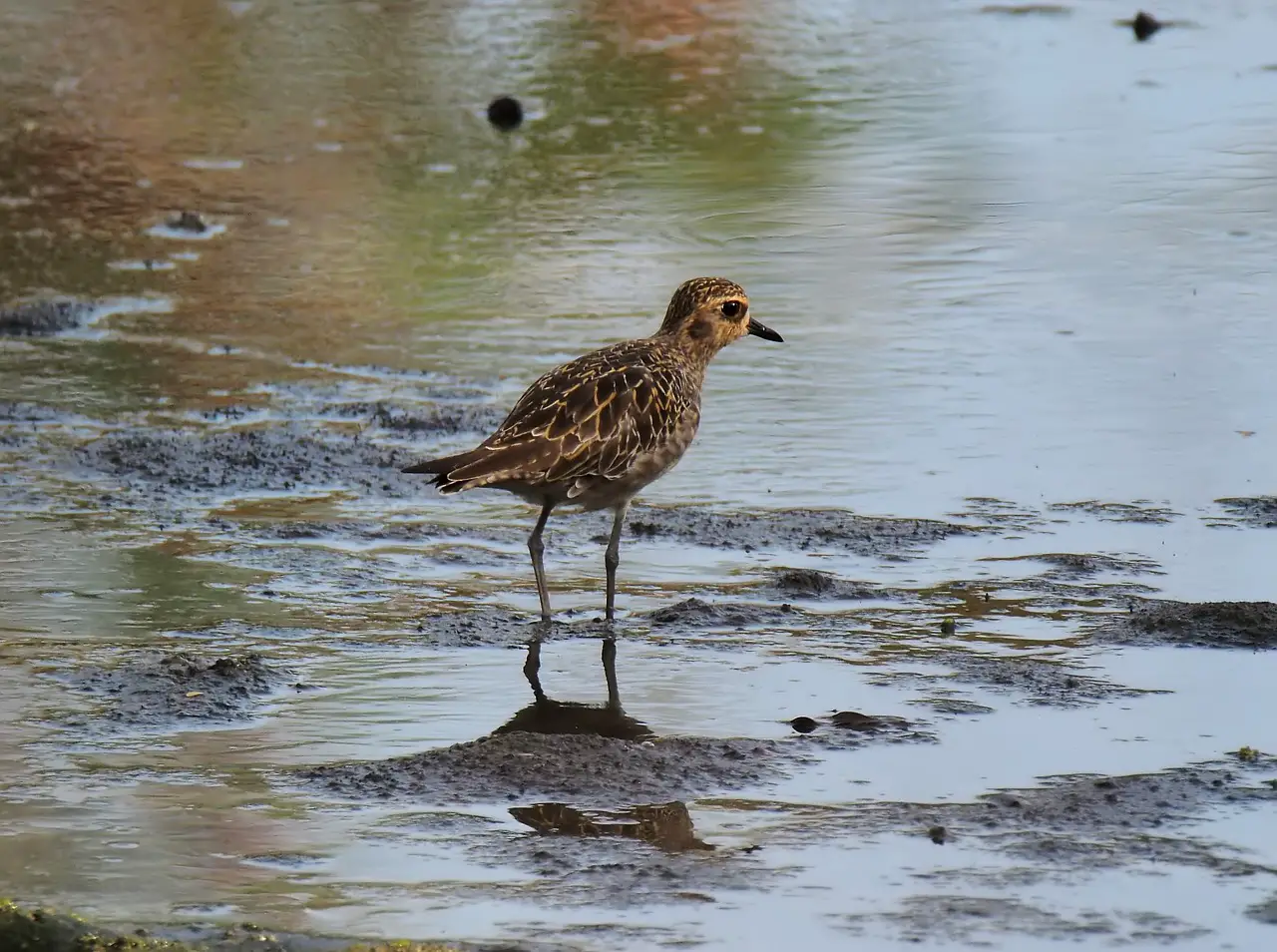Bird species are plentiful around the swamps and marshes of the world. Different social and feeding behaviour mean that you can find flocks of fowl, shorebirds, cormorants, long-legged herons while predatory birds fly overhead. Species that live in marshes have adapted to their habitat in different ways.
Swamps are home to water-loving birds such as herons, spoonbills, coots, rails, egrets, ducks, and stilts. Birds of prey such as the peregrine falcon, osprey, harriers, and even bald eagles can often be seen flying around marshes.
This guide shows a few of the many bird species that you may spot around marshes.
Did you know that birds bathe in nine different ways? Find out more here

Birds of prey
Because many species are found in marshes, you are also sure to find predatory birds to take advantage of. Harriers, eagles, and falcons all take advantage of the abundance of food. Birds of prey each have their skills and preferred prey, making them the apex predator.
Harriers will regularly pass over reed beds in marshy areas, flushing out their prey with incredible agility. Peregrine falcons are coastal birds nesting on cliffs. Falcons can often be seen watching over marshes where wading birds gather to feed.
The waders may avoid falcons by rising together in a tight group, making it harder for the peregrine to catch an individual. However, the peregrine is fast and deadly and will often catch its prey.
Ospreys and bald eagles turn their attention to the waters of the marshlands to eat fish. The osprey will catch fish from the surface of the water. It has a clever trick of holding its prey in line with the direction it is flying, which reduces wind resistance.
Ducks
Duck species and other waterfowl will venture into marshier areas, although it does depend on the species. The wood duck is found year-round in the swamps and marshes of the southern United States.
The wood duck is closely related to the Asian mandarin duck, evident in some male and female plumage patterns. The Asian mandarin duck can be found in Europe, North America, China, and Japan.
Mallards are common in many parts of the world, and their ability to interbreed with other species leads to some curious hybrids in wetlands.
Rails and coots
Smaller species have a different way of moving around, especially when there is lots of vegetation. Coots and rails have adaptations in their feet that let them walk over the plants and roots to get around. This allows them to move around as easily on dry land as in the water.
The common gallinule is a type of moorhen that can also use its feet on lily pads and spend its time feeding on weeds and insects in the water.

Herons, egrets, and spoonbills
Some of the easier to spot birds in swamps and marshes are the tall wading birds. Herons, egrets, and spoonbills can stride through deep water using their long legs to hunt fish, amphibians, and other prey.
Herons can stand extremely still, waiting for the right moment to strike, while egrets are often more active, waving their bright yellow feet to lure in fish. There are also smaller species like the yellow-crowned night heron, which catch fish in their large bills.
The roseate spoonbill is an incredible species found in North and South America. The name comes from the bill’s shape, which they use to sift through water for food. Roseate relates to its pink colouration, which makes it stand out from the white Eurasian spoonbill.
Do you know how kestrels hunt? Find out in this article I wrote
Shorebirds
In marshy coastal areas, you will also spot waders that use the mudflats for feeding. There are over 210 species of waders worldwide. While some look similar, most have clever adaptations to help them find food.
Stilts are longer-legged to wade out a little further onto the mud, while others such as curlews have specially adapted bills to probe into the mud to catch certain prey. Because different species don’t feed on the same prey, you can often see many species coexisting peacefully.
Many different species
The diversity of birds in marshlands is large, with other birds taking advantage of the reeds and waterways for food, nesting, and cover. One species that feed different from other birds in marshes is the belted kingfisher. Belted kingfishers are incredible fish hunters, striking the water to catch their prey with deadly accuracy from its perch.
Another species you can see around marshland is the anhinga. Also known as the snakebird or American darter, the anhinga is closely related to the cormorant. The anhinga has a long neck with a spear-like bill. It spends its time chasing and catching fish from the water.
If you head to a marsh, you will see many species of birds. Which birds you see will change depending on the season. Some birds are a common sighting, while others are much rarer.

